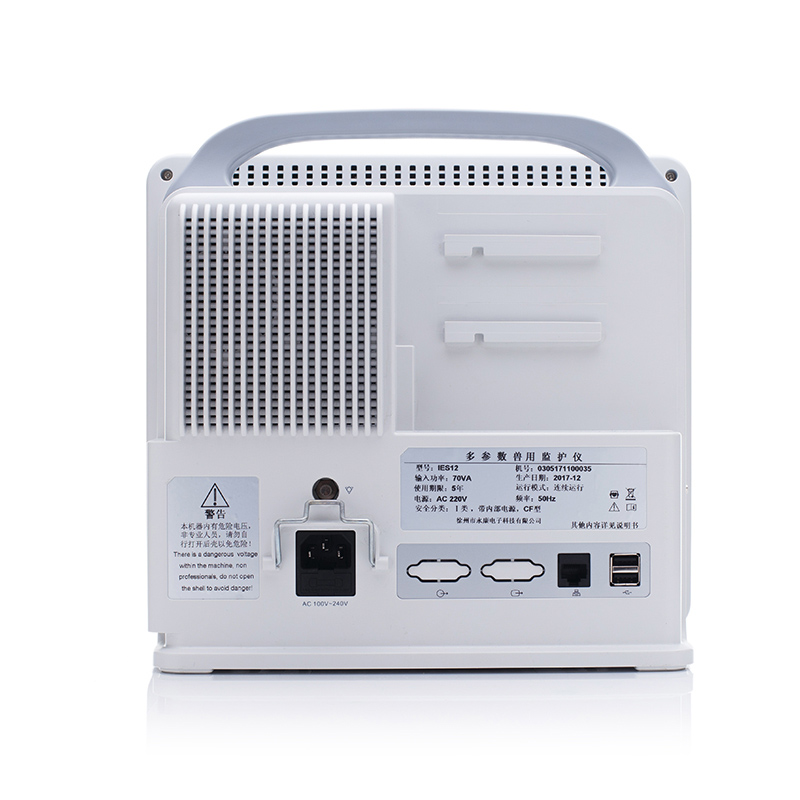Monitored Anesthesia Care (MAC), also known as conscious sedation or twilight sleep, is administered through an IV to make a patient sleepy and calm during a procedure. The patient is typically awake but groggy and can follow instructions as needed.
Medications that might be used during monitored anesthesia include: Lifecare Cardiac Monitor

MAC is used for outpatient procedures where patients are expected to go home after the anesthesia has completely worn off.
The level of sedation provided with this type of anesthesia ranges from light sedation to deep sedation. The patient may feel silly and a little sleepy, or under heavier doses may be mostly asleep.
In light sedation, patients can speak, hear things around them, answer questions, and follow commands. They are aware of the procedure but not in pain and typically don't feel anxious about what is happening.
Moderate sedation, also called conscious sedation, causes patients to feel more sleepy than under light sedation, but they are not necessarily asleep. Awareness is generally reduced under moderate sedation, but patients might remember some aspects of the procedure. They can respond to commands.
With heavier sedation, the patient is breathing on their own but is unaware of their surroundings and typically isn't "awake." This type of anesthesia is different from general anesthesia because the patient is not chemically paralyzed, nor do they require assistance with breathing. The vital signs are closely monitored to ensure stability throughout the procedure.
One medication commonly used for this type of sedation is propofol, also known as the brand name Diprivan, which is given through an IV and looks remarkably similar to milk. This medication wears off quickly (less than ten minutes for most people), so the patient can wake shortly after the procedure.
Because the level of sedation varies, the process is monitored by a specially trained healthcare professional who is always present to continuously monitor the patient's vital signs and maintain or adjust the level of sedation as needed. Healthcare professionals who can perform monitored anesthesia care vary by the level of anesthesia as well as state and institutional policy, but may include:
At a minimum, vital signs are measured with a blood pressure cuff and an oxygen monitor. Typically, electrodes are placed on the chest to monitor the patient's heart rate and EKG throughout the procedure.
This type of sedation is frequently used with minor surgical and dental procedures and can be combined with local or regional anesthesia to decrease pain. Some examples of procedures that might use monitored anesthesia care include:
Patients having conscious sedation often have fewer side effects than those who have general anesthesia. The most common side effect is nausea, but some patients do experience both nausea and vomiting. If you have experienced nausea or vomiting after anesthesia in the past, be sure to tell your anesthesia provider so medication can be given to help prevent it from happening again.
There are potentially serious side effects of monitored anesthesia care, but these are rare. They might include:
Monitored anesthesia care is crucial to keeping patients comfortable during specific medical or dental procedures. A bad experience during a healthcare encounter can hinder future healthcare, so having a good experience is crucial to maintaining good health.
Different drugs are used to provide different levels of sedation, depending on the procedure being performed. If you have any questions about monitored anesthesia care, ask your healthcare provider before any procedures.
Das S, Ghosh S. Monitored anesthesia care: An overview. J Anaesthesiol Clin Pharmacol. 2015;31(1):27-9. doi:10.4103/0970-9185.150525
Kapur A, Kapur V. Conscious sedation in dentistry. Ann Maxillofac Surg. 2018;8(2):320-323. doi:10.4103/ams.ams_191_18
Sohn HM, Ryu JH. Monitored anesthesia care in and outside the operating room. Korean J Anesthesiol. 2016;69(4):319-26. doi:10.4097/kjae.2016.69.4.319
Boujaoude Z, Arya R, Shrivastava A, Pratter M, Abouzgheib W. Impact of moderate sedation versus monitored anesthesia care on outcomes and cost of endobronchial ultrasound transbronchial needle aspiration. Pulm Med. 2019;2019:4347852. doi:10.1155/2019/4347852
MedlinePlus. Conscious sedation for surgical procedures.
Jun J, Han JI, Choi AL, et al. Adverse events of conscious sedation using midazolam for gastrointestinal endoscopy. Anesth Pain Med (Seoul). 2019;14(4):401-406. doi:10.17085/apm.2019.14.4.401
By Jennifer Whitlock, RN, MSN, FN Jennifer Whitlock, RN, MSN, FNP-C, is a board-certified family nurse practitioner. She has experience in primary care and hospital medicine.
Thank you, {{form.email}}, for signing up.
There was an error. Please try again.

wireless patient monitoring system By clicking “Accept All Cookies”, you agree to the storing of cookies on your device to enhance site navigation, analyze site usage, and assist in our marketing efforts.